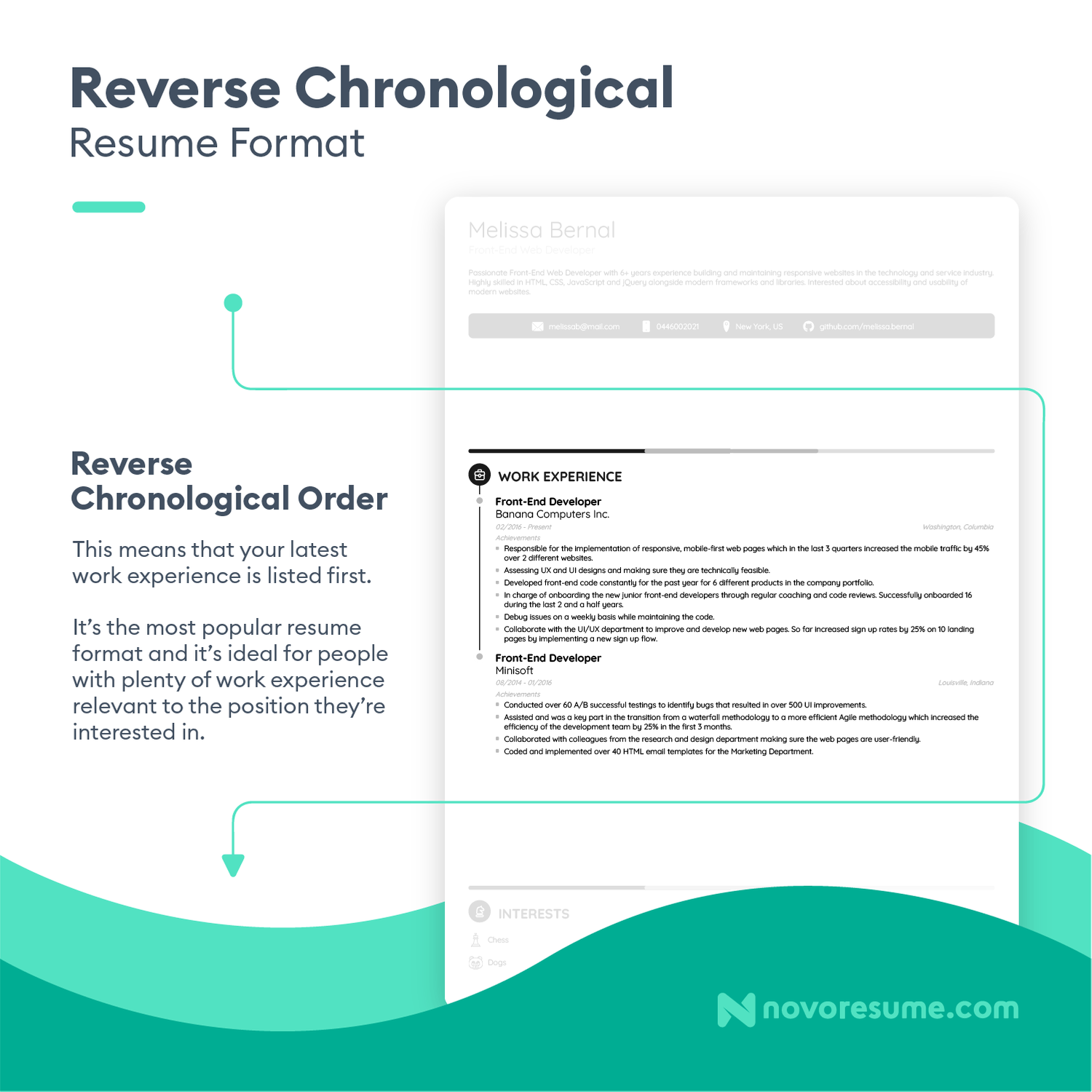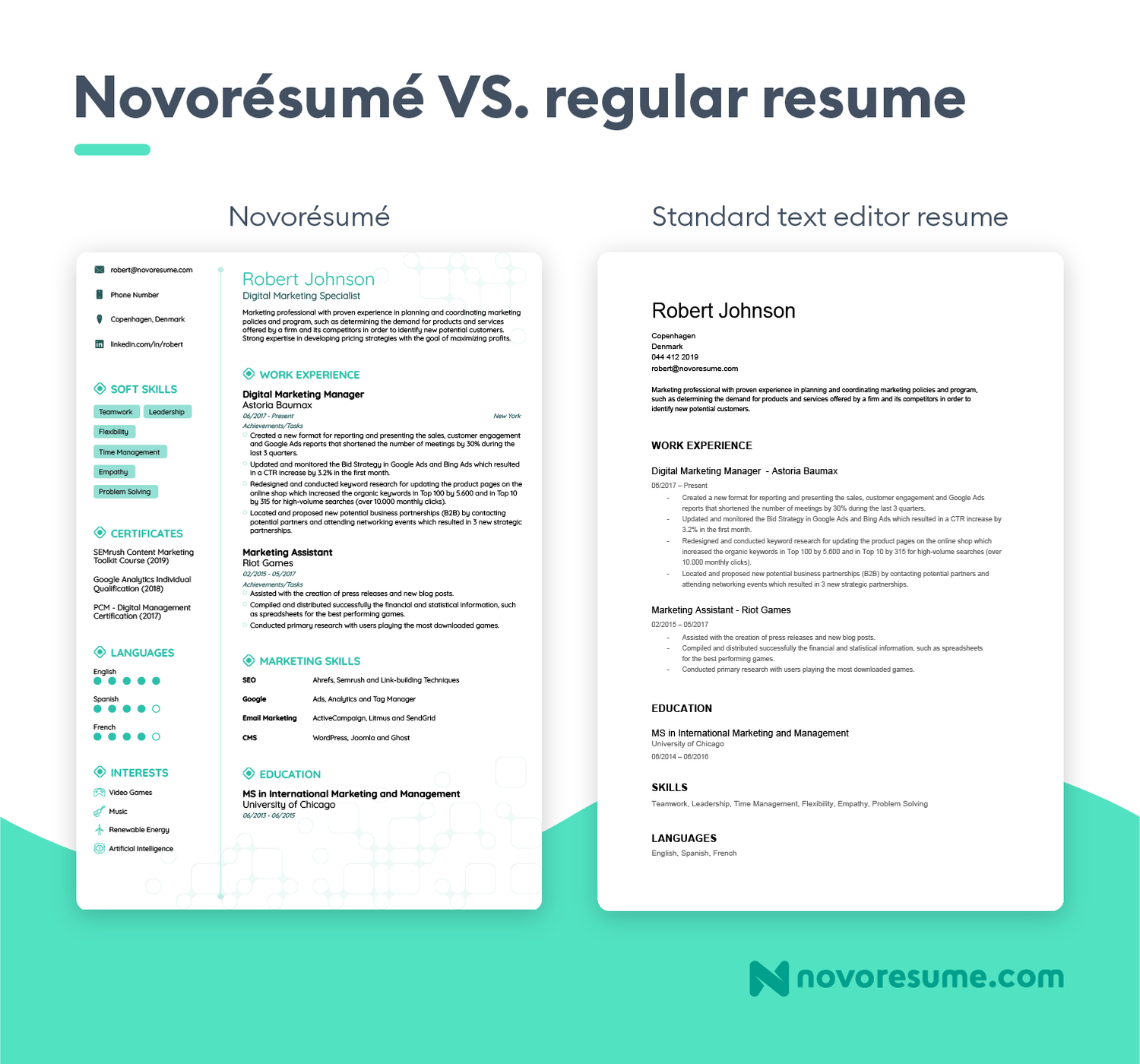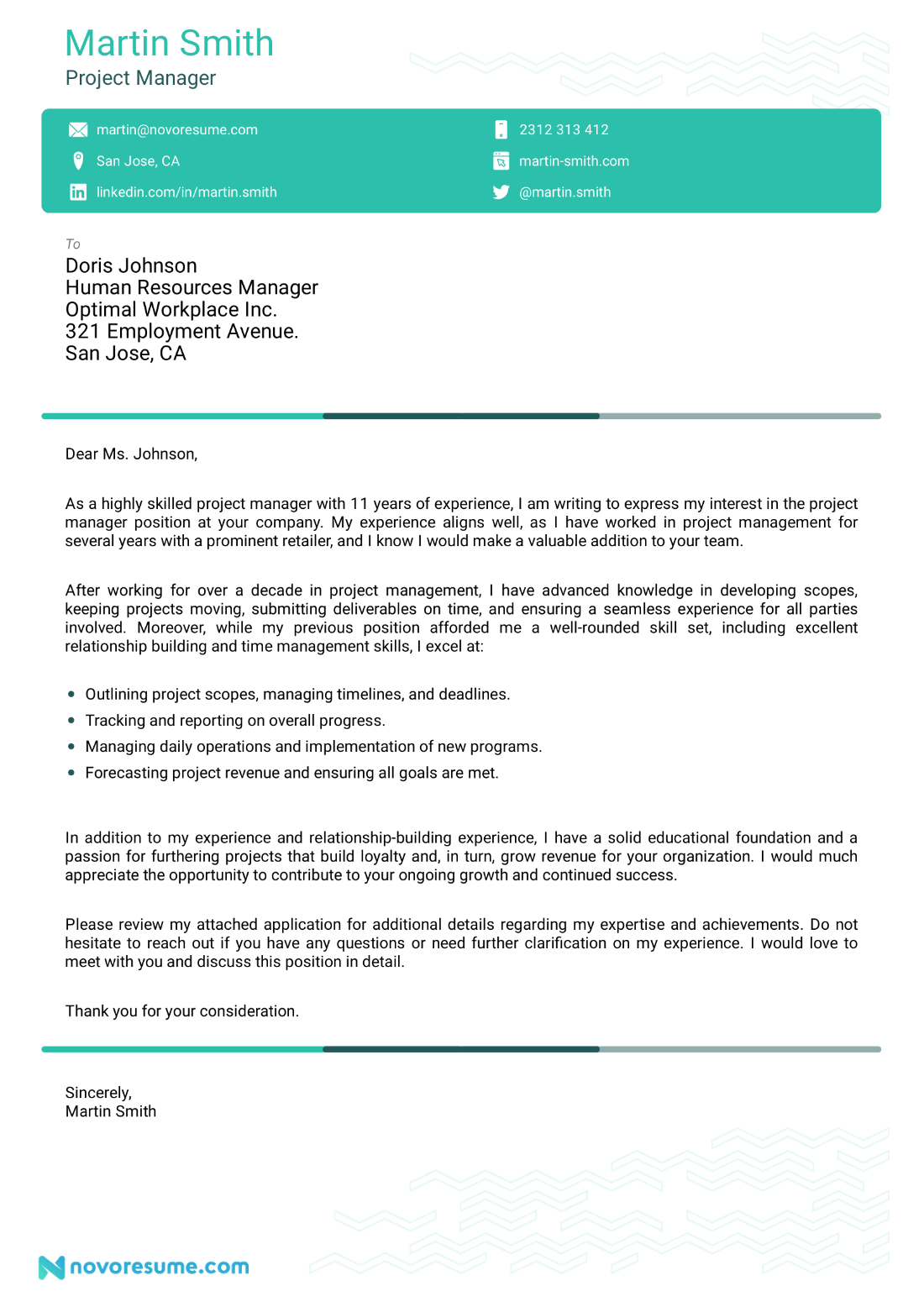So, you’re a writer.
You have a way with words and yet, each time you sit down to write your resume, you get stuck.
Ironic, right?
On a serious note, though, writer’s block is no joke, and it’s even less fun when it’s preventing you from getting your dream job.
If you’re struggling with your writer resume, we can’t blame you - after all, writing a resume isn’t all that exciting.
With the right guidance, though, writing a job-winning writer resume doesn’t have to be a matter of inspiration and we’re here to show you exactly how to nail it!
So, in this article, we will cover:
- Writer Resume Example (Better Than 9 Out of 10 Examples)
- 8 Steps to Write the Perfect Writer Resume
- 55+ Top Writing Skills in 2022
…and more!
So, let’s dive right in.
Writer Resume Example
The resume at the top is an excellent writer resume example because it contains all the following elements:
- Reverse-chronological format. On top of putting the spotlight on your work experience, the reverse-chronological format is also a favorite among recruiters worldwide. For these reasons, it’s the ideal choice for a writer resume.
- Relevant contact details. This writer resume example contains relevant contact information, including the candidate’s name and surname, email address, phone number, location, professional website URL, and LinkedIn URL.
- Impressive resume summary. The writer resume example above includes a brief but effective resume summary that highlights the candidate’s skills and top achievements.
- Quantifiable achievements. The candidate in the writer resume example above uses numbers to emphasize the impact their achievements had on their previous work.
- Short education section. A writer’s skills and experience matter more than their education. For this reason, this candidate kept their writer resume’s education section short and sweet.
- Bullet points. Using bullet points to organize your writer makes it look clean and well-organized, and recruiters have an easier time reading it.
- Effective skills section. This writer resume only includes in-demand writing skills. What’s more, the candidate has organized their soft and hard skills into separate columns, which makes the resume easier to follow.
- Additional sections. The writer resume example above makes good use of additional sections by including the candidate’s various memberships and their language proficiency.
8 Steps to Write the Perfect Writer Resume
Now that you know what makes an impressive writer resume, it’s your turn to write a resume that’s just as compelling as our writer resume example above (or even better!).
Here are all the steps that will help you to write the perfect writer resume:
#1. Choose the Right Format
Before you jump into filling in the contents, let’s address how to format your writer resume the right way.
Essentially, there are 3 resume formats you can choose from:
Your best option, however, is to pick the reverse-chronological format for your writer resume.
Generally speaking, the reverse-chronological resume format is the safest choice. That’s because it effectively highlights your work experience by listing your most recent jobs first AND it’s recruiters’ favorite format.
Here’s what the reverse-chronological resume format looks like:

Now that we got formatting out of the way, let’s discuss your writer resume layout.
Here are all the elements of a great resume layout:
- Adjust the margins. To make sure your writer resume isn’t cluttered and looks well-organized,
- Choose a professional font style. You want your writer resume to be easy-to-read, so pick a professional and straightforward font style that looks good on both PDF and paper. Make sure to use it consistently throughout your writer resume so that it doesn’t look messy.
- Use the right font size. A small font can be hard to read, whereas one that’s too big will spill your resume over to page #2. As such, you want to go for 11-12 pts for the body of your writer resume and 14-16 pts for your resume headings.
- Make use of bullet points. Whenever possible, use bullet points to organize the information on your resume. Bullet points don’t just make your writer resume look neat - they also help the hiring manager to quickly skim through it.
- Keep it short. Optimally, you want your resume to fit into a single page. This increases the chances of the hiring manager actually reading your resume - after all, they go through hundreds of resumes every day.
- Choose the right file format. Unless you’re asked to do otherwise, saving your writer resume as a PDF file is your safest option. This ensures that your resume maintains its formatting no matter the device or OS the hiring manager uses to open it.
Use a Resume Template to Save Time
As a writer, you probably want to get to actually writing your resume as soon as possible.
However, if you’re making your writer resume from scratch, you have to deal with the formatting first.
And let’s be honest - tweaking the margins and adjusting font sizes to make sure your writer resume fits into a single page can be a real hassle.
Well, with our free resume templates, you can forget about formatting your writer resume and jump straight into filling in the contents!
Our professional resume templates will help you save time AND leave a lasting impression on the hiring manager. Designed in collaboration with professional hiring managers, they are easy to scan, well-structured, modern, and visually appealing!
Here’s how our tried-and-tested free resume templates compare to the basic black and white traditional templates:

#2. List Your Contact Details
Once you’ve chosen the right format for your writer resume, you can focus on filling in the contents.
So, let’s start with the basics - write down your contact information first, including:
- Your first name and last name
- Your professional title (optional)
- Your phone number
- Your email address
- Your location (city and state)
- Your writing website/portfolio/relevant social media profiles, blog, etc.
Can’t get any easier than this, right?
Just make sure not to make any mistakes (this applies to your entire writer resume) - after all, no company wants to hire a writer that can’t properly spell and isn’t attentive to detail.
Here’s an example of a contact information section that includes all of the above:
#3. Write an Impactful Resume Summary
Any writer knows the importance of capturing the audience’s attention with just the first couple of sentences.
Well, writing a resume is no different - actually, writing a powerful resume summary is your chance to catch the hiring manager’s attention!
In essence, the point of a resume summary is to give the hiring manager a brief, yet impressive overview of your professional background.
As such, in just 2-3 sentences, your resume summary shows the recruiter whether you’re a relevant candidate and helps them decide if they should give your writer resume a closer look.
So, here are the elements you should mention in your resume summary to impress the hiring manager:
- Your professional title and years of experience
- Your most relevant writing skills
- Your top 1-2 professional achievements
And here’s an example of an impactful resume summary that includes all of the above:
Professional and detail-oriented Technical Writer with 7+ years of experience in writing end-user documentation, specializing in user help guides. Excellent writing, analytical thinking, research, and time management skills. Rewrote over 80% of user help guides for 30+ products at Company X, resulting in a 42% decrease in product-related customer support calls.
#4. Focus on Your Work Experience
Once you’ve written an attention-grabbing resume summary, you’re ready to write the most important writer resume section - your work experience.
First, let’s address the formatting - here’s how to do it:
- Stick with the reverse-chronological order. To ensure consistency throughout your writer resume, begin with your latest work experience and work your way back.
- Add the job title. Make sure that it accurately describes your former role and avoid using buzzwords. ‘Copywriter’ sounds much more professional than a ‘Keyboard Wizard’.
- Include company details. Only mention key company information, such as name and location. You can also include a brief company description, especially if the latter isn’t a household name.
- Mention the employment period. Use the mm/yyyy format consistently throughout your writer resume.
- Write down your responsibilities and achievements. Use 5-6 bullet points for recent positions and 2-3 for older roles.
By now, you should have a well-structured work experience section. However, you want your writer resume to stand out and impress the hiring manager.
Luckily, it isn’t hard - the key is to focus on your achievements over responsibilities.
This way, you can show the hiring manager how well you performed in your previous workplaces and how you could benefit their company.
Lastly, follow these tips to bring your work experience section to perfection:
- Customize your work experience section for the position. If you have tons of work experience, only mention the most recent and relevant jobs.
- Use numbers to back up your achievements. Quantifying your achievements helps to really drive the point home (e.g. “Wrote 15 technical manuals” instead of “Wrote technical manuals”).
- Use action verbs. Nearly all resumes will include ‘Responsible for…’. So, to make your work experience section stand out, use action verbs instead (wrote, edited, proofread, collaborated, etc.)
Here’s an example of an impactful work experience section:
Senior Copywriter
Agency X
06/2016 - 10/2020
- Developed unique and authentic brand voices for 15+ clients in the fashion, beauty, and health industries.
- Increased 12 landing page conversion rates by an average of 36% in 10 months.
- Helped to boost organic traffic for a fashion website from 500,000 to 2.4 million monthly users in 18 months.
- Increased product awareness by writing 6 press releases on beauty product launches each year.
- Proofread and edited all projects, including other copywriters’ works, for grammar, consistency, and accuracy.
What If I Don’t Have Work Experience?
Although the work experience section is by far the most important part of your writer resume, it doesn’t mean that you can’t write a job-landing resume if you lack relevant work experience.
After all, as someone who enjoys writing, you likely have different types of writing experience, even if you haven’t been employed as a writer just yet.
So, instead of work experience, you can focus on any other writing experience you may have, including:
- Academic projects
- Volunteering
- Internships
- Extracurricular activities
- Personal projects
For example, if you run a blog, make sure to mention it on your writer resume, especially if it has a substantial following.
Here’s what your work experience section could look like if you don’t have work experience:
Volunteer
Soup Kitchen Townhall
06/2020 - 12/2021
- Wrote a monthly email newsletter mailed to 1,700+ people, including local non-profit organization leaders.
- Interviewed 10+ patrons, board members, and volunteers.
- Wrote 2 press releases for the local newspaper, which enticed 8 new volunteers to join the cause.
- Wrote 3 Facebook posts each week and adapted them for Twitter to promote the soup kitchen.
- Helped to grow the Twitter follower base from 0 to 1,500+ followers in 6 months.
#5. Keep Your Education Section Short
Let’s keep it real - hiring managers care much more about your writing skills and work experience than about your education.
For this reason, you should only mention key education details in your writer resume.
So, start with your latest degree and list your education details as such:
- Degree Name
- University, college, or other educational institution
- Location (optional)
- Years attended
Unless you don’t have any higher education (you aren’t alone, by the way - Mark Twain, Ray Bradbury, and George Orwell are just some of the many famous writers that never got a degree), feel free to swap your high school education details for an additional section to give your resume more flavor.
And here’s an example of a brief and to-the-point education section:
BA in English Language and Literature
University of Essex, England
08/2014 - 07/2018
#6. Add In-Demand Writing Skills
Besides work experience, the skills section is one of the key sections on your writer resume that shows the hiring manager your abilities.
For this reason, you want to make it count - and no, that doesn’t mean putting all of your skills on your writer resume.
In fact, hiring managers highly value customization when assessing your resume, which is why you want to tailor the skills section of your writer resume for the specific position.
For example, if you’re applying to be a technical writer, chances are the hiring manager won’t care much about your rock-solid pitching skills. So, instead, write down skills related to technical writing, such as product knowledge, research, and analytical thinking.
Here are some more tips that will help you to make the most out of your skills section:
- Include any skills you have that the company is looking for. To prove that you’re a great fit for the position (and an attentive reader), make sure to carefully read the job description. If they mention any skills that apply to you, add them to your writer resume.
- Research the most in-demand writer skills. If you’re struggling to decide what skills to include, make sure to research what skills are currently most valued in the industry. Alternatively, you can also check our list of 101+ essential skills for some inspiration.
- List your hard and soft skills separately. Splitting your skills section into two allows for more straightforward navigation and makes your writer resume look more organized.
Looking for more ideas on which skills to add to your writer resume?
We’ve got you covered - here’s a list of the 55+ top soft and hard skills for writers to get you started!
55+ Top Writing Skills in 2022
15 Soft Writer Skills
- Communication skills
- Time management
- Creativity
- Attention to detail
- Interpersonal skills
- Persuasion
- Collaboration
- Strong work ethic
- Active listening
- Organizational skills
- Ability to follow instructions
- Independence
- Empathy
- Stress management
- Adaptability
40 Hard Writer Skills
- Research
- Drafting
- Spelling
- Punctuation
- Proofreading
- Revising
- Wide vocabulary
- Creating outlines
- Interpreting statistics
- Establishing tone
- Reporting
- Identifying audience
- WordPress
- MS Word
- Google Docs
- Content Management Systems (CMS)
- Interviewing
- Note-taking
- Analytical thinking
- Data visualization
- Ethical writing
- Multilingualism
- Creative writing
- Technical writing
- Academic writing
- News writing
- Feature writing
- SEO writing
- Business writing
- Proposal writing
- Dialogue writing
- Sales writing
- Screenwriting
- Storytelling
- Pitching
- Sourcing
- Fact-checking
- Product knowledge
- Marketing
- AP style
#7. Take Advantage of Optional Resume Sections
Do you still have some space left on your writer resume?
Use it to show off your unique professional experience with one or more of these optional resume sections:
- Languages. Make sure to mention any language proficiency in your writer resume, especially if that also means you write in multiple languages.
- Publications. If you’ve published studies, interviews, research papers, or anything else of that sort, include them on your writer resume.
- Associations and organizations. Include your memberships in writers’ associations and organizations as well as your role in them.
- Conferences. List any writing or industry-related conferences in your writer resume to show your interest in the field.
- Awards. If your writing has received recognition and awards, don’t be shy and mention it on your writer resume!
Here’s an example of how to put these optional sections on your writer resume:
Awards
- Sir Peter Ustinov Television Scriptwriting Award (2018)
- International Academy of Television Arts and Sciences
Languages
- French - Native or Bilingual Proficiency
- English - Professional Working Proficiency
- Danish - Professional Working Proficiency
#8. Attach a Cover Letter to Your Resume
By now, you’re just one step away from writing a job-landing writer resume - and that last step is to attach a compelling cover letter to it.
Essentially, a cover letter is somewhat similar to a pitch - the goal is to convince the hiring manager that you are the writer they’ve been looking for.
So, you want to show that you aren’t just a talented writer but you’re also the perfect fit for the company, its vision, and mission. And yeah, that means you’ll have to research the company to get a sense of what exactly they’re looking for.
Now, as a writer, you shouldn’t have much trouble writing a convincing 4-5 paragraph cover letter, but since “selling” ourselves is often a daunting task, here are some guidelines to get you started:
- Start your cover letter by including your contact information at the very top of the page.
- Next, address the cover letter directly to the hiring manager to set you apart from other candidates who will likely use clichés such as ‘To Whom It May Concern’ as someone who’s done their research.
- Capture the hiring manager’s attention by listing one or two of your top achievements in the first paragraph.
- Use the body of your cover letter to provide more details on your professional background, including anything that you didn’t mention on your writer resume, and express why you strive to work specifically for this company.
- To effectively close your cover letter, add a call to action (e.g. ‘I’m particularly interested in the X project and I’m eager to discuss how I could contribute to it at your earliest convenience.’)
- Lastly, make sure to check out our cover letter writing guides, including cover letter writing tips and cover letter mistakes.
And here’s a job-winning cover letter example:

Want your cover letter to show your attention to detail? Use our cover letter templates to match it to your writer resume!
Key Takeaways
And that’s a wrap - by now, you know exactly how to write an effective writer resume (and a convincing cover letter!) to land the job.
Before you put your writing skills to practice, though, let’s go over some of the key points mentioned in this article:
- To emphasize your work experience, choose the ever-popular reverse-chronological resume format.
- Write a powerful resume summary that highlights your years of experience, skills, and achievements to catch the hiring manager’s attention.
- Focus on your achievements to make your work experience section pop and show the recruiter what they can expect if you join their company.
- Add optional sections, such as languages, awards, and associations, to set you apart from your competitors.
- Attaching a compelling cover letter will help you win the job by persuading the hiring manager that you’re the right choice for their company.


